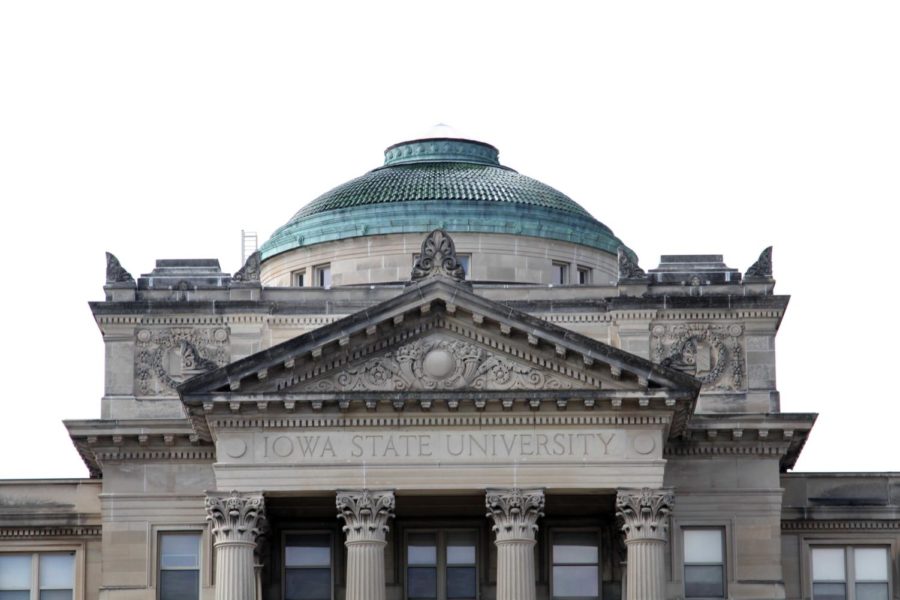Editorial: With tuition on the rise, state needs to take action
Beardshear Hall from Central Campus on Sept. 19.
November 15, 2018
Iowa State President Wendy Wintersteen announced to the university in an email Thursday the Board of Regents’ five-year plan for tuition, beginning in the fall.
Three proposals were introduced by Regents President Mike Richards, each dependent on the state legislature’s decision to allocate funding toward Iowa’s public higher education institutions.
No matter what, however, resident undergraduate students can expect a percent increase to their tuition.
If the state meets the appropriation requests by the universities, the Board will implement a 3 percent increase to resident undergraduate tuition.
If the state provides no additional funding, the Board intends to implement a 3 percent increase to resident undergraduate tuition in addition to the projected Higher Education Price Index. According to Wintersteen, the index is projected at 2 percent for the current year.
If the Regents are partially funded, resident undergraduate students in the fall can expect their tuition rates to be within the outlined range.
While no decision has yet been solidified as a first reading regarding tuition is not scheduled until April, it is disheartening to know that despite budgetary actions by the Iowa Legislature, undergraduate resident students can again expect a tuition increase.
Last year, the Regents proposed — and approved — a 3.8 percent tuition increase for resident undergraduates. The proposal comes just a week after Gov. Kim Reynolds approved $10.9 million in midyear cuts to the Iowa Board of Regents that will be absorbed by both Iowa State and the University of Iowa.
This year, Iowa State said it will be requesting “increased state appropriations and will make internal reallocations to ensure our budget fully aligns with strategic priorities in our teaching, research, and extension programs and student services.”
What does this look like? A $7 million increase to general state appropriation in an effort to support student financial aid. According to her email, Wintersteen will be meeting with Governor Reynolds on November 26 to “make a case for additional state resources.”
That being the case, we have some talking points from each college as to why its time the Iowa Legislature and the governor discontinue their trend of divestment in Iowa’s regent institutions.
-
College of Engineering: More than 70 percent of engineering students graduate with engineering work experience.
-
College of Agriculture and Life Sciences: International students for the spring 2018 semester come from 57 countries; 104 undergraduate students and 159 graduate students.
-
Debbie and Jerry Ivy College of Business: The first to have an entrepreneurship undergraduate major at a public university in Iowa.
-
College of Design: 97 percent of its undergraduate and 99 percent of its graduate students gain employment or continue their education within 6 months after graduation.
-
College of Human Sciences: No. 1 in scholarly contributions to fashion marketing, according to Clothing and Textiles Research Journal.
-
College of Liberal Arts and Sciences: 21 academic departments and one school.
-
College of Veterinary Medicine: More than $840,000 in scholarships are offered each year to veterinary medicine students.
Students should no longer bear the majority of the burden of receiving a higher education. Not only is tuition high, but so is the cost of living. If Iowa doesn’t start taking immediate action to invest in its institutions, and students, then the Regents will only continue to be forced to raise the cost of attending its public schools.







